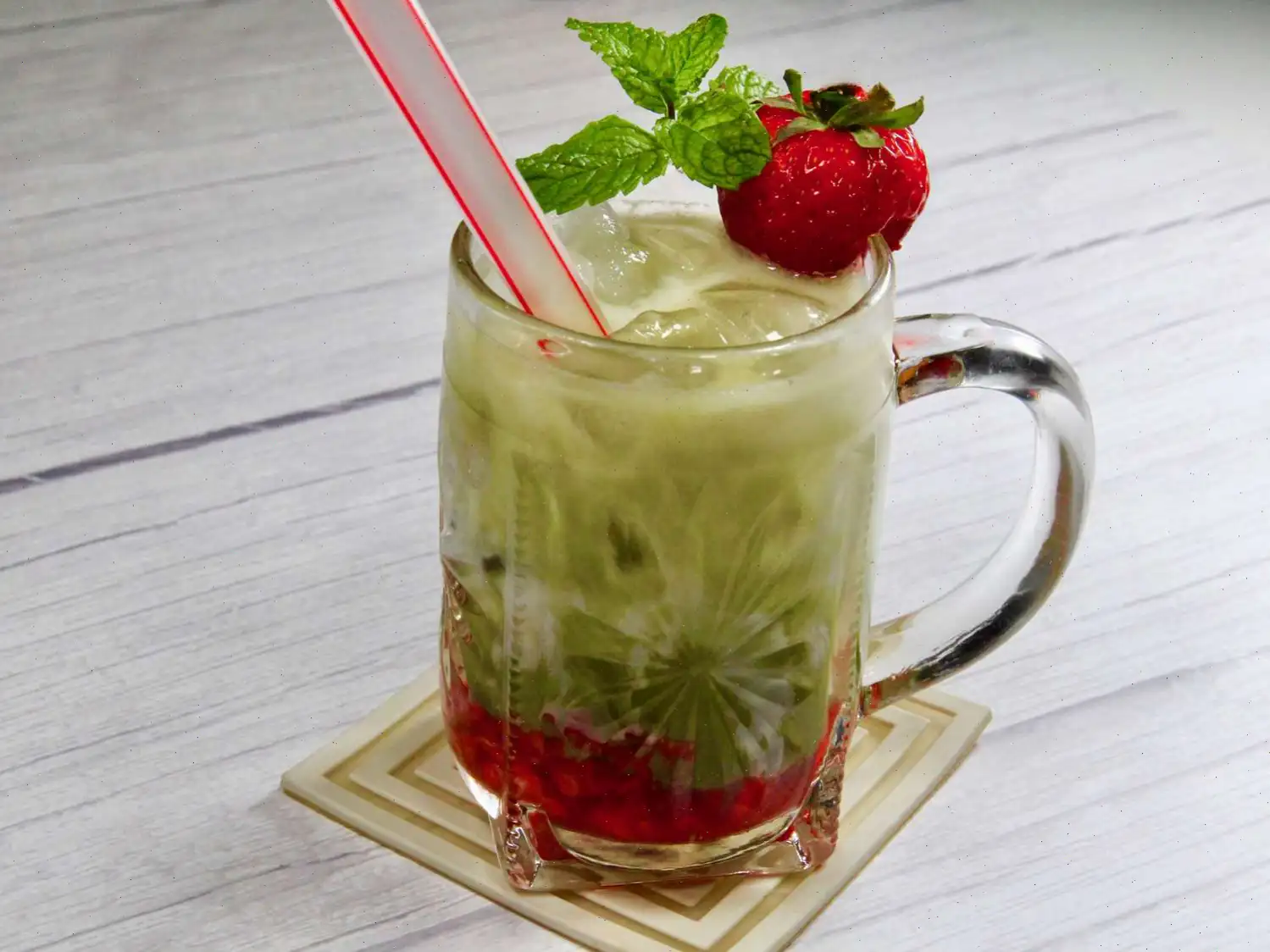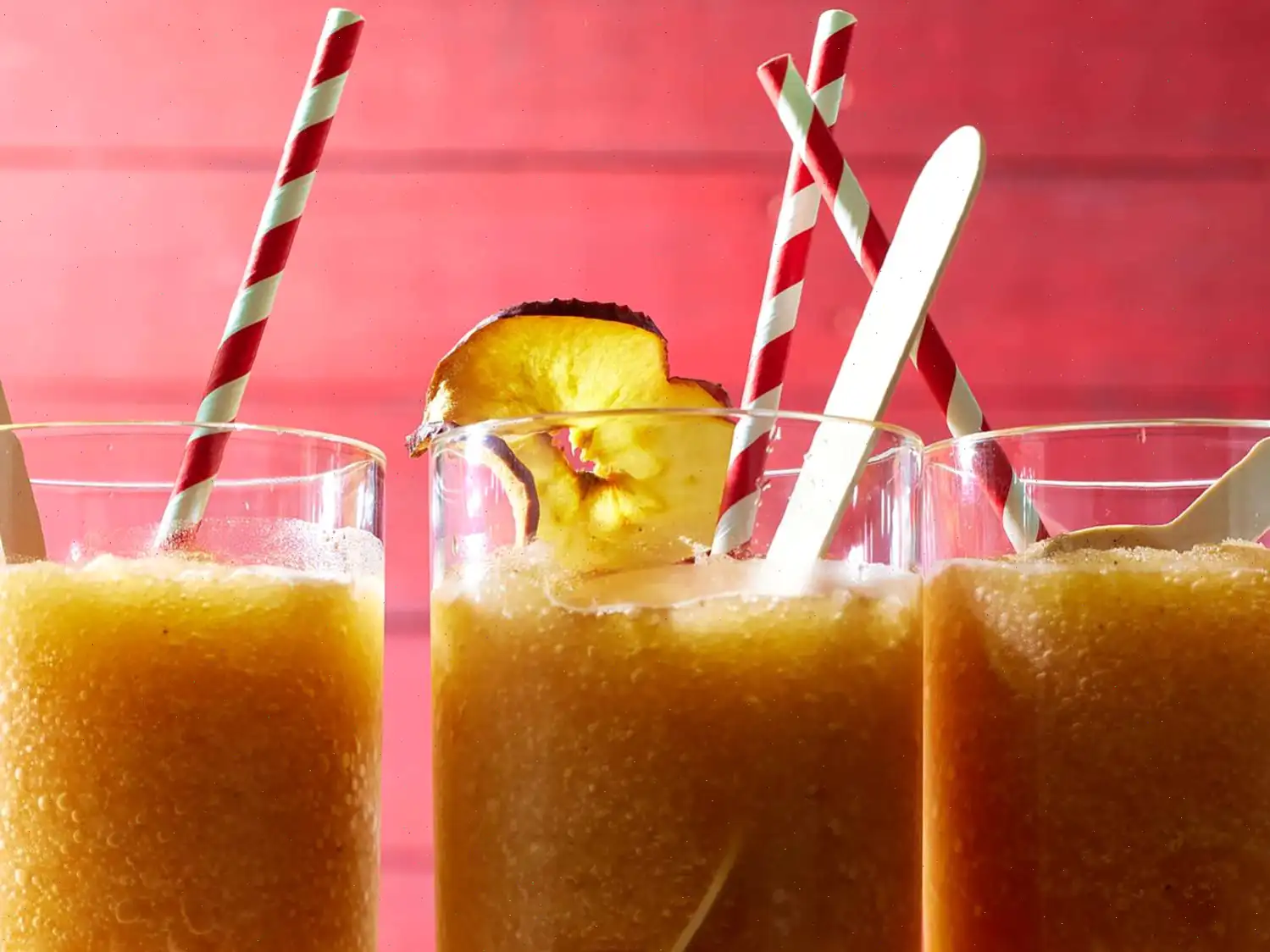
Strawberry Matcha Latte Recipe
Ingredients:
- 1/3 cup finely chopped fresh strawberries (about 4 to 5 strawberries)
- 1 tablespoon white sugar, or to taste
- 1/4 cup boiling water
- 1 teaspoon matcha green tea powder
- Ice, as needed
- 1/2 cup unsweetened vanilla almond milk, or milk of your choice
Directions:
- In a small bowl, combine the chopped strawberries with the sugar. Use a fork to lightly crush and mix the strawberries (you can also use a muddler), then spoon the mixture into a glass.
- In a separate bowl or cup, whisk the boiling water and matcha powder together until smooth and well combined. Set aside.
- Place a handful of ice on top of the crushed strawberries in the glass.
- Slowly pour the milk over the strawberry-ice mixture, followed by the matcha mixture.
- Stir everything together and serve with a wide straw for the best sipping experience.
Cooks Note:
The amount of sugar you use depends on the sweetness of your strawberries and your personal preference. If you'd like a stronger matcha flavor, feel free to add more matcha powder.
Nutrition Facts (per serving):
- Calories: 87
- Fat: 2g
- Carbs: 18g
- Protein: 1g
- Sodium: 98mg
- Fiber: 1g
- Total Sugars: 15g
- Vitamin C: 34mg
- Calcium: 271mg
- Iron: 1mg
- Potassium: 176mg
Percent Daily Values are based on a 2,000 calorie diet. Your daily values may be higher or lower depending on your calorie needs.
The Origins and Story of Strawberry Matcha Latte
The Strawberry Matcha Latte is a contemporary twist on traditional Japanese matcha tea, blending the vibrant, earthy flavors of powdered green tea with the natural sweetness of fresh strawberries. Matcha itself has a centuries-old history, dating back to the Tang dynasty in China and later flourishing in Japan, where it became an integral part of tea ceremonies. The latte version, combining milk and fruit, emerged in modern cafes as a creative fusion drink, catering to global tastes and the increasing popularity of matcha as both a beverage and health ingredient.
Regional Variations and Influences
While originally inspired by Japanese tea culture, the Strawberry Matcha Latte has been adapted in many regions worldwide. In Japan, matcha is traditionally consumed in a ceremonial style, but contemporary cafes in Tokyo often experiment with cold or iced versions incorporating fruit syrups or dairy alternatives. In Western countries, almond, oat, or soy milk is frequently used instead of cow's milk, and strawberries may be replaced with other berries or tropical fruits. This flexibility has made the drink popular in both urban coffee shops and online recipe communities.
Distinctive Features Compared to Similar Drinks
Unlike a standard strawberry smoothie or a classic iced latte, the Strawberry Matcha Latte balances the slightly bitter, umami flavor of matcha with the sweet, tart notes of strawberries. Traditional lattes rely on coffee as the base, whereas this beverage is caffeine-rich through matcha but avoids the roasted taste of espresso. This subtle yet complex flavor profile distinguishes it from fruit teas, frappes, or flavored milk drinks, creating a refreshing and visually appealing layered presentation.
Where Its Commonly Served
Strawberry Matcha Lattes are typically featured in specialty cafes, bubble tea shops, and modern tea bars. They are popular during spring and summer for their chilled and visually appealing presentation, often served in clear glasses to highlight the green and red layers. Some establishments even add decorative elements like whipped cream, edible flowers, or matcha dusting to enhance both taste and aesthetics. At home, it is enjoyed as a light, energizing beverage for breakfast or an afternoon refreshment.
Interesting Facts and Cultural Notes
- Matcha is packed with antioxidants, particularly catechins, which are linked to numerous health benefits including improved metabolism and mental alertness.
- The combination of fruit and matcha is a modern innovation, influenced by the growing trend of visually striking drinks for social media sharing.
- Some cafes layer strawberry puree, milk, and matcha in a rainbow effect, which requires careful pouring to maintain the visual separation of ingredients.
- Strawberries, often considered a Western fruit, complement the Eastern matcha flavor, creating a harmonious East-meets-West beverage.
- While it can be served hot, the iced version is more popular because it preserves the freshness of strawberries and the vibrant green color of matcha.








